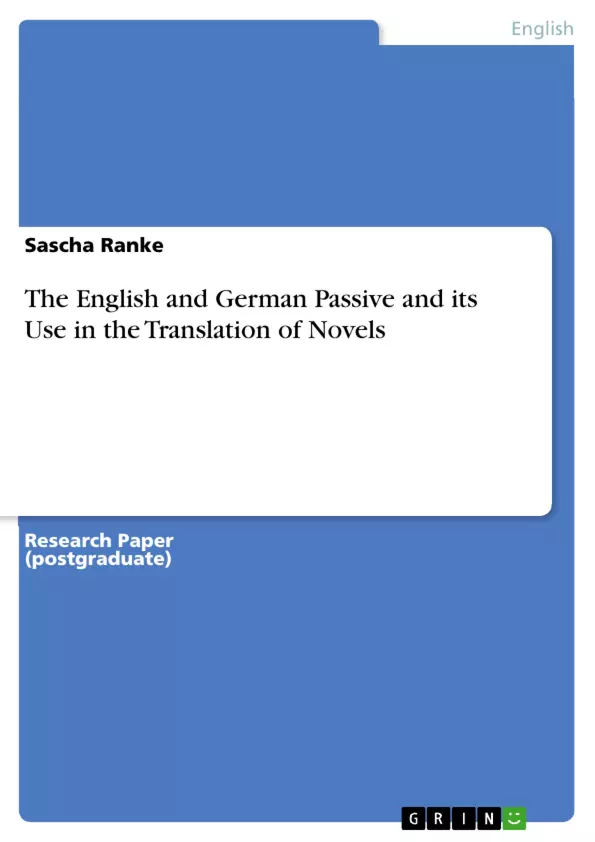This paper analyzes differences and similarities in the usage of passive constructions in German and English and its usage in Novels and their translations
Table of Contents
- 1.0 Introduction
- 2.0 The Science of Linguistics-A general overview
- 2.1 What is Contrastive Linguistics?
- 2.2 The Science of Translations
- 3.0 The English Passive
- 3.1 Status of the English passive in linguistic theory
- 3.2 Comparison of English and German passive constructions
- 4.0 The Use of the Passive in English translations
- 4.1 The frequency of the passive in comparison
- 5.0 Conclusion
Objectives and Key Themes
This paper aims to investigate the differences and similarities between the English and German passive constructions and analyze their usage in translated novels. The goal is to demonstrate that the passive, despite being a controversial topic in contrastive linguistics, is a crucial element of grammatical analysis and its usage differs significantly between the two languages.
- Contrastive Linguistics: The paper explores the evolution and methodologies of contrastive linguistics, including the concept of "tertium comparations" and the development of sub-genres.
- Translation Studies: The study examines the evolution of translation science, focusing on the communicative models and the challenges of intercultural differences in translation.
- English and German Passive: The paper analyzes the characteristics and usage of the passive in English and German, highlighting the differences and similarities in their grammatical constructions.
- Novel Translations: The paper investigates the frequency and application of the passive in English translations of novels, comparing it with the original German texts.
- Cultural Context: The study examines the cultural and stylistic differences that influence the use of the passive in English and German novels.
Chapter Summaries
- Chapter 1.0 Introduction: This chapter introduces the paper's central theme: the contrastive analysis of the English and German passive, particularly in the context of novel translation. It emphasizes the importance of understanding grammatical constructions in a globalized world and highlights the economic significance of English and German literature.
- Chapter 2.0 The Science of Linguistics-A general overview: This chapter provides a brief overview of the field of contrastive linguistics, tracing its development from its origins in the Prague School to the current focus on interlanguage research and the social and situational context of language use. It also examines the evolution of translation studies, discussing the different models and challenges of translating between languages.
- Chapter 3.0 The English Passive: This chapter delves into the English passive construction, exploring its status in linguistic theory and comparing it to the German passive. It analyzes the similarities and differences in their grammatical structures and the implications for translation.
- Chapter 4.0 The Use of the Passive in English translations: This chapter examines the use of the passive in English translations of novels, comparing its frequency and application to the original German texts. It explores how the passive is employed to achieve specific stylistic effects and how it reflects cultural differences.
Keywords
The core keywords of this paper include contrastive linguistics, translation studies, English passive, German passive, novel translation, intercultural communication, grammatical structures, stylistic differences, and cultural context. These keywords encapsulate the primary themes and concepts of the research, focusing on the comparison of language systems, the challenges of translation, and the role of cultural factors in linguistic analysis.
- Quote paper
- Sascha Ranke (Author), 2011, The English and German Passive and its Use in the Translation of Novels, Munich, GRIN Verlag, https://www.grin.com/document/208736



